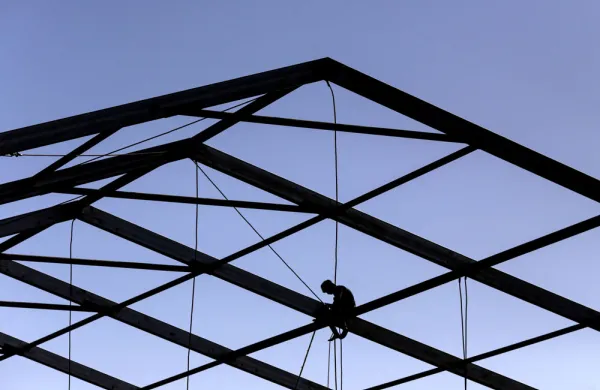For companies in the business of building and selling homes, rising interest rate cycles can mean a painful double whammy. Higher rates push up the cost of mortgages, hurting new-home sales, and they also increase the cost of debt financing for the homebuilders themselves. Consider the last time rates climbed over a prolonged period, in the early 1990s: Overleveraged developers got caught in a spiral that hiked their interest tabs just as revenues took a hit from falling housing starts. Several homebuilders, including NVR and U.S. Home Corp, went bankrupt.
Now, after riding a decadelong housing boom to blockbuster earnings, companies in the sector are bracing for another round of escalating rates. But they've learned from the beating they took a decade ago and should be able to emerge from a down cycle in much better condition this time around. Many have diversified geographically and thus are less susceptible to regional housing-market swings. And they build fewer homes "on spec" before selling them. That should mean their balance sheets won't be saddled with nonperforming assets in a housing slowdown.
"We realized after the last down cycle that builders with the best capital structure, the best return on that capital and the most diversification could thrive in a downturn," says Bruce Gross, chief financial officer at Miami-based Lennar Corp., one of several homebuilders that have posted a string of double-digit annual earnings gains and seen their credit ratings boosted to investment-grade.
Los Angelesbased KB Home has acquired smaller competitors around the country, most recently in Indiana and South Carolina. When sales declined sharply two years ago in Texas -- which then accounted for one third of its sales -- KB was able to shift resources to healthier states and limit the damage to earnings. "It didn't show up at all in our results," says Kelly Masuda, the company's treasurer. "We were able to reallocate capital to our other regions."
Improving their operations has allowed big builders like Lennar and KB Home to retire or refinance debt. "In the early 1990s debt was 70 percent of the sector's capital," says Joseph Snider, a senior credit analyst at Moody's Investors Service. "Now it's 50 percent and falling."
Several homebuilders are acting now to refinance and extend the maturity of outstanding debt before the string of short-term interest rate hikes by Federal Reserve Board policymakers starts taking a toll on longer-term borrowing costs. Lennar, for instance, plans to refinance a tranche of 11.25 percent bonds that come due in May with new paper that it likely will be able to issue at half that cost, says Gross. In late January, Dallas-based Centex Corp., owner of builder Centex Homes, issued $300 million of two-year floating-rate notes, replacing shorter-term paper, in an effort to lock in low rates.
"As short-term interest rates move up, we typically replace commercial paper with longer-term debt," says Centex Homes CFO Andrew Kerner. The company is also steeling itself for leaner times by assigning a special group of managers to streamline production and trim costs.
Absent the usual worries about their balance sheets heading into a cyclical downturn, homebuilders face a different financial issue: what to do with the mountains of cash they've been accumulating during the housing boom. Most have been actively buying back shares in recent years. Some, including KB Home; Lennar; and D.R. Horton, based in Fort Worth, Texas, also have boosted their dividends.
But the sector's shares still trade at a discount to the broader market because of investor concerns about its ability to sustain growth rates if housing starts slow down. That may drive the industry's big players to use cash for big acquisitions -- rather than for the buyouts of tiny, regional competitors they've executed of late -- in a bid to boost profits through greater scale and efficiency.
"There is still room for them to grow their business organically, but at some point growth will become tougher to come by," says Richard Moriarty, a Citigroup investment banker who has advised homebuilders for nearly 15 years. "Five years from now I would bet that we'll look back on some big deals. It's the next logical step."





